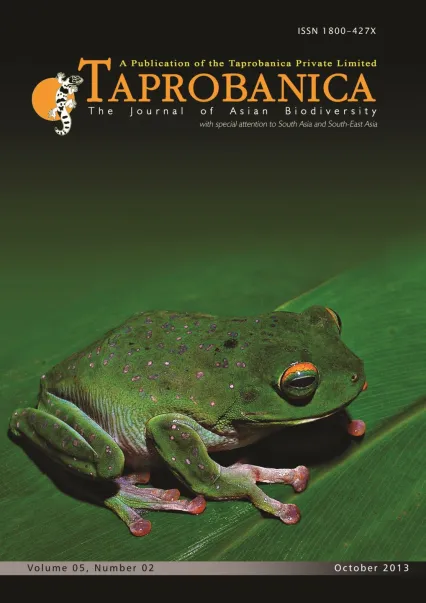

v5i2.105
Volume 5 | Number 2 | November 2013
Major Article
ISSN: 1800-427X (print)
eISSN: 1800-427X (online)
DOI:10.47605/tapro.v5i2.105
Submitted date: 30 May 2013
Accepted date: 31 October 2013
Published date: 25 December 2013
Pp. 102–110.
ENVIRONMENTAL EFFECTS ON THE MORPHOLOGY OF THE SNOW TROUT Schizothorax richardsonii (GRAY, 1832)
Vandana Rajput, J.A. Johnson* & K. Sivakumar
*Corresponding author. E-mail: jaj@wii.gov.in
Abstract
This study examines the relationship between morphological traits related to body size and fin morphology and the environment in snow trout, Schizothorax richardsonii, a widespread species from the upper Ganga river basin, India. Three body shape traits (index of compression, index of trunk shape and relative body depth) and three fin traits (dorsal fin relative area, pectoral fin relative area and pectoral fin aspect ratio) were related to five environmental variables (water temperature, water flow, depth, conductivity and substrate diversity) across eight study streams. Water temperature, conductivity and substrate diversity were highly variable across the sampled sites. There was a significant negative correlation (r = -0.676) between composite morphological traits (principal components) related to body size and fin morphology. Furthermore, both body size and fin morphology were strongly correlated (r = 0.861 and r = -0.845 respectively) with composite environmental variables (water temperature, conductivity and substrate diversity) across sites. These findings suggest that the morphological traits of fish populations residing across environmental gradients are adapted to different habitats.
Key words : Schizothorax richardsonii, ecomorphology, environmental variables, Ganga River
Section Editor: Sandra Binning
eISSN: 1800-427X (online)
DOI:10.47605/tapro.v5i2.105
Submitted date: 30 May 2013
Accepted date: 31 October 2013
Published date: 25 December 2013
Pp. 102–110.
ENVIRONMENTAL EFFECTS ON THE MORPHOLOGY OF THE SNOW TROUT Schizothorax richardsonii (GRAY, 1832)
Vandana Rajput, J.A. Johnson* & K. Sivakumar
*Corresponding author. E-mail: jaj@wii.gov.in
Abstract
This study examines the relationship between morphological traits related to body size and fin morphology and the environment in snow trout, Schizothorax richardsonii, a widespread species from the upper Ganga river basin, India. Three body shape traits (index of compression, index of trunk shape and relative body depth) and three fin traits (dorsal fin relative area, pectoral fin relative area and pectoral fin aspect ratio) were related to five environmental variables (water temperature, water flow, depth, conductivity and substrate diversity) across eight study streams. Water temperature, conductivity and substrate diversity were highly variable across the sampled sites. There was a significant negative correlation (r = -0.676) between composite morphological traits (principal components) related to body size and fin morphology. Furthermore, both body size and fin morphology were strongly correlated (r = 0.861 and r = -0.845 respectively) with composite environmental variables (water temperature, conductivity and substrate diversity) across sites. These findings suggest that the morphological traits of fish populations residing across environmental gradients are adapted to different habitats.
Key words : Schizothorax richardsonii, ecomorphology, environmental variables, Ganga River
Section Editor: Sandra Binning
- List of Articles & Contents





